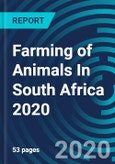The Farming of Animals
Livestock farming is South Africa’s largest agricultural sector, accounting for over 40% of agricultural output’s total value and occupying roughly 80% of available agricultural land. In rural areas, animal farming is often the primary income generator and to many South Africans, livestock is also a form of social capital. Although primary agriculture contributes a relatively small share to the country’s GDP, it plays an important role in job creation and earning foreign exchange through exports. The strength of South Africa’s livestock production lies in its well-established private sector and its support for small and emerging commercial farmers. Many animal farmers have a wealth of institutional knowledge; operating farms that have been in the family for generations.Commercial Farming
In recent decades farming companies have replaced individual farmers. There over 13,500 animal farms or farming units, of which a third are commercial farms. Concentration and centralisation are partly responsible for the sharp reduction in the number of commercial farming units. The sector is responding to mounting pressure for high standards and transparency with regards to safety, quality, environmental sustainability and welfare. The ongoing drought in many regions of South Africa is severely affecting animal farmers.Report Coverage
This report focuses on the farming of animals in South Africa, with a particular focus on the production of livestock. It includes information on the state and size of the sector and focuses on various subsectors, including stud and stock breeding, commercial livestock farming, an emerging commercial sector, communal farmers, speculators and horse and game breeders. There is information on cattle, dairy, pig, sheep, goat and game farming and statistics on consumption, imports and exports, slaughters per province, land use and number of households involved in agriculture, among others, and information on factors that influence the sector such as disease, theft and environmental and land issues. This report does not include profiles of notable industry players.Table of Contents
1. Introduction3. Size of the Industry7. SWOT Analysis8. Outlook9. Industry Associations
2. Description of the Industry
4. State of the Industry
5. Influencing Factors
6. Competition
10. References
Methodology

LOADING...








